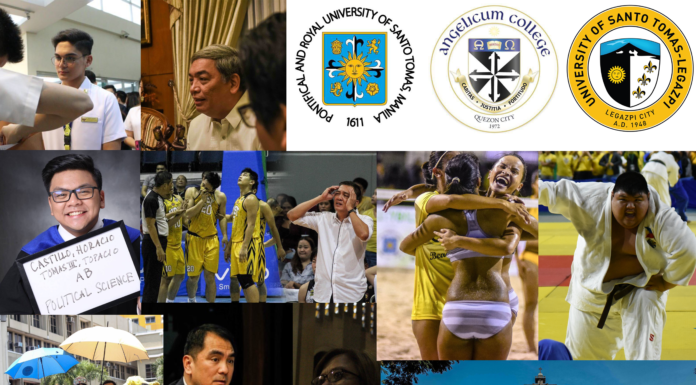A FEW days ago, while waiting for my Legal Ethics class to start, I was engaged in a conversion with my classmate, Dr. Bernardino-Ramos. “Tita Mids”, as colleagues from the Faculty fondly call her, was discussing the prevalent problems encountered by some students with regard to the health services being provided by the university.
From what I gathered from her little expose, it appears that in terms of providing UST students with a comprehensive health program, the University and its hospital are two separate entities, which in effect means that the P1, 000 that we pay every semester does not cover possible expenses from the UST Hospital.
Funny that it was only two issues ago of The Varsitarian that the UST Hospital claimed tax exemption from the Bureau of Customs based on the fact that the University and its hospital are one and the same.
Please don’t get me wrong. I am not implying that UST students be provided with absolutely free medical services from the UST Hospital. What the author merely proposes is that a sort of health insurance coverage be developed for all members of the university.
Rusty as my arithmetic may be, if we multiply the P1, 000 charged per student by the number of enrollees the university receives per semester, which is around 31,000 Thomasians, we will arrive at something like P31million a semester or a whopping P62 million per school year.
Indeed, the amount collected every semester may be enough to start a health fund for students which, if properly managed through some financial wizardry, can serve as a risk-spreading fund for students.
It makes you wonder if all that money is actually spent on students, considering that not all of students go to the Health Service every semester. Anyway, let us give these people the benefit of the doubt.
After all, they are the vanguards of Thomasian health.
* * *
Near the end of every semester, students are provided an opportunity to evaluate their professors. The evaluation is regarded by some as “payback” time. Students are given the opportunity to assess the services that were rendered to them by the teaching members of the University.
Being the curious nut that I am, I begin to wonder why only teaching personnel of the University are evaluated by the students when members of the administration and their staff who also interact with students in order to determine their performance for the semester as well as possible ways in improving them, if needed—which is the case most of the time.
What recourse is there for students against abusive and discourteous non-teaching personnel of the University?
Of course, one could always report such undesirable behavior to their immediate superiors, but what if the superior refuses to believe the complaint? Will this be another “magtiis ka na lang” situation for the hapless students?
* * *
Fortunately, some non-teaching departments have already begun noticing this fact and have started furnishing evaluation forms like the UST Health Service.
Hopefully the attitude is infectious so that other offices in the University would take a similar action.
* * *
Before ending another edition of Plumb Lines, I’d like to extend my greetings and congratulations to the Pan Xenia Fraternity of the University of the Philippines in Diliman on its 79th founding anniversary. Peace.
















